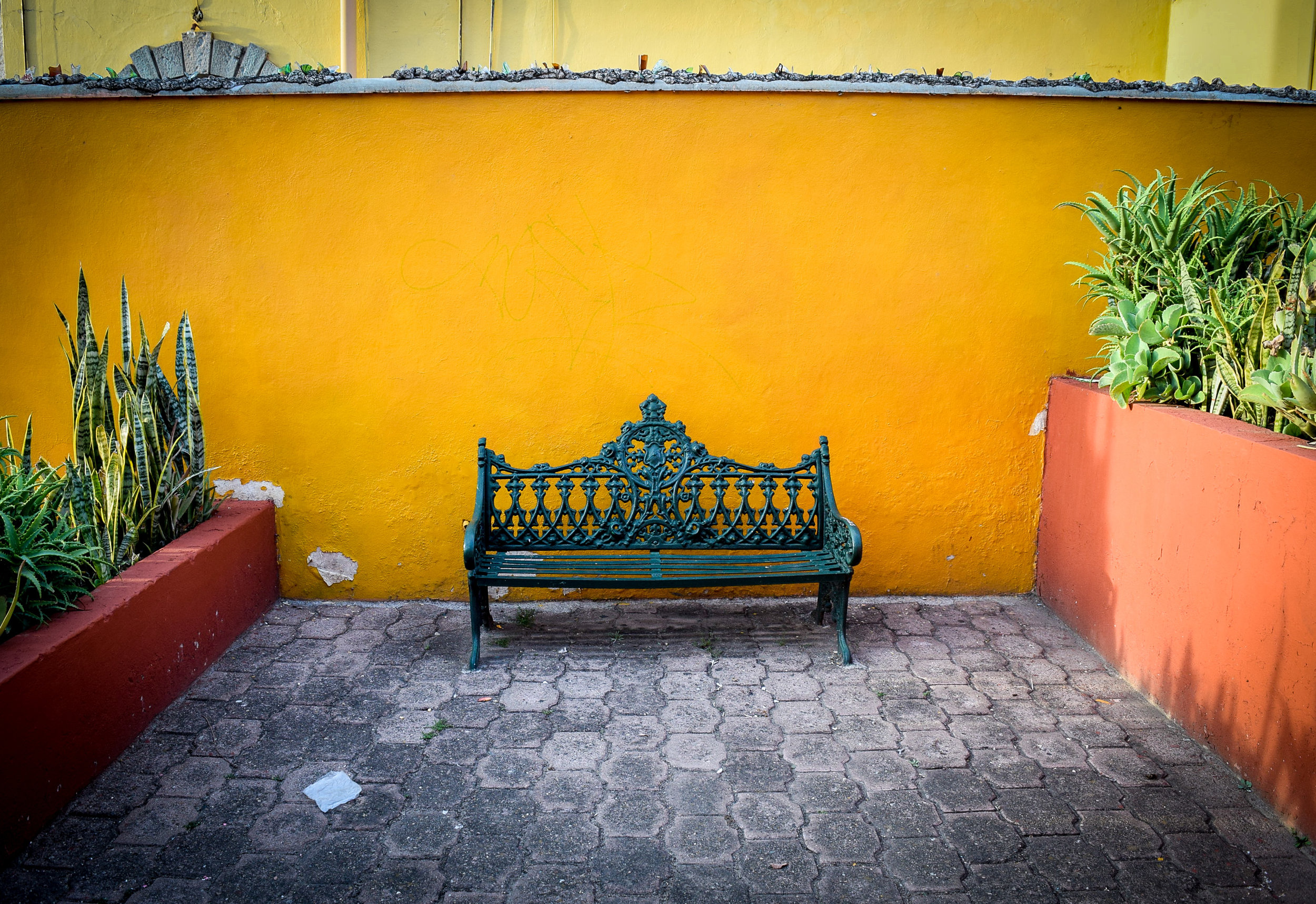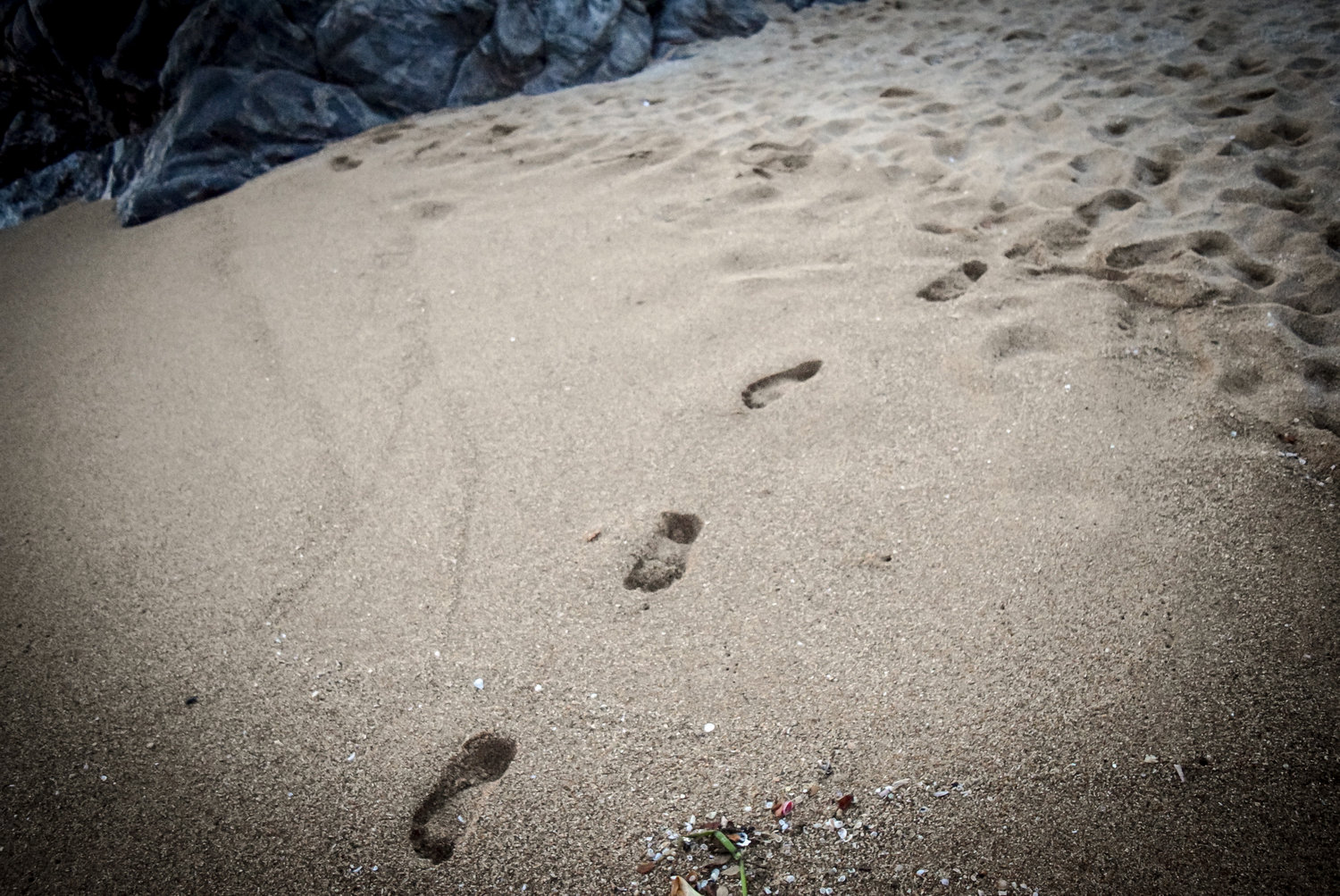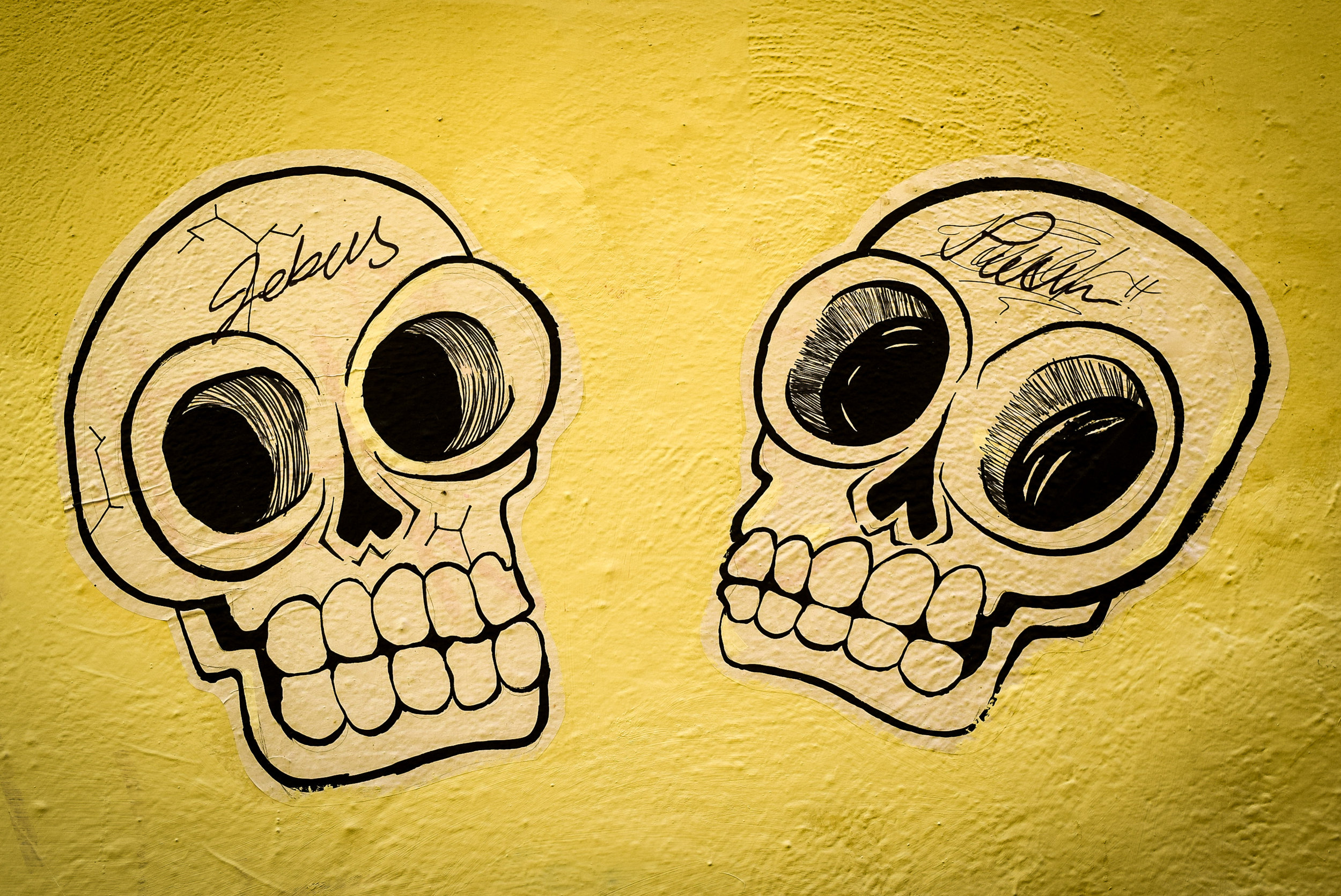16 Quintessential Mexico City Experiences
Big cities have never really been my thing. I’ll gladly choose the peace of a secluded beach or a hiking trail in the remote wilderness over the incessant noise, frenetic energy, and hordes of anonymous people you find inhabiting a sprawling metropolis. But despite my general dislike, there are some cities whose allure you simply can’t escape.
And, in all of North America, there is perhaps no other city as fascinating as Mexico's colossal capital.
Originally founded by the Aztecs, conquered by the Spanish, defended against the Americans, and finally rising to power and size as a world megalopolis, Mexico City, the oldest capital in the Americas, has a turbulent and colorful past that has shaped the Distrito Federal into a vibrant mosaic of culture, arts, and history. Despite receiving a bad reputation as being polluted, crime-laden, and generally a dangerous place, the city has striven to make improvements over the last twenty-five years towards its cleanliness, safety, and the environment. It’s still not perfect by any means, but it is progress.
The recent improvements haven't gone unnoticed. Food-obsessed travelers are making their way to Mexico City to dive into the street food scene and satisfy their appetite in some of the city's best restaurants. History buffs and culture lovers can spend weeks exploring over 100 museums, plus countless theaters and places of historical interest. Those who simply want to find the best place for a good cappuccino or some vintage shopping can do so too, in several of the hip and revitalized (some would say gentrified) neighborhoods. And now, with the Mexican peso hitting record lows it’s that much easier to book your next trip to this gargantuan and magnificent capital.
To help you plan, here are 16 quintessential Mexico City experiences - perfect for the first-time visitor in the world's tenth largest city.
#1. Celebrate the Dead during Dia de los muertos
Dia de los Muertos, or Day of the Dead, is probably the most iconic of all Mexican traditions. This celebration of death is a national holiday that takes place each year at the end of October and beginning of November. During this time graveyards and homes fill with candles, sugar skulls, and trinkets honoring the dead.
But it’s not just in the cemeteries or in private residences where you’ll find signs of this long-standing tradition. In cities and town squares throughout the country, Mexicans set up altars for their deceased loved ones. Typically, you’ll find these shrines decorated with fruit and other foods that were once enjoyed by the dead while they were alive. The characteristic cempasúchil (marigold) flowers adorn altars everywhere and add a touch of cheerful color.
Although celebrations take place across all of Mexico, the capital city has recently begun a new tradition thanks to the latest James Bond film, Spectre. The opening scene of the movie has James Bond chasing a villain through a huge Dia de los Muertos parade in the Centro Histórico. A real-life replica of the parade, complete with hundreds of performers and acrobats, is now scheduled to take place each year in Mexico City. Last year marked the first parade, and the response was mixed. Some worry that the transformation of this age-old tradition into a more commercial affair may be detrimental to the culture, while others have enjoyed the theatrics of the giant spectacle.
Regardless of which side of the spectrum you fall on, the enormous Dia de los Muertos parade through downtown Mexico City is an experience not to be missed.
Related: Impressions from Día de los Muertos
#2. Gaze upon the Artwork of FRIDA KAHLo
Located in the Coyoacán district, the Museo Frida Kahlo is one of the most popular museums in all of Mexico City. Also known as Casa Azul, or the blue house, named after the color of the walls, this building was the birthplace of the artist and the home in which she grew up. She lived here with her husband, and fellow Mexican artist, Diego Rivera for several years, and eventually died in one of the upper rooms. Today, visitors can find a display of personal objects, photographs, and artwork by both Frida Kahlo and Diego Rivera, offering a deeper understanding of their lives and art.
The Frida Kahlo Museum is open from Tuesday to Sunday. Admission per adult is 130 pesos on weekdays and 150 pesos on weekends.
#3. ADMIRE THE INTRICATE ROOF OF THE PALACIO DE BELLAS ARTES
With its unique and intricate domed top, the Palacio de Bellas Artes, or Fine Arts Palace, is possibly the most beautiful building in all of Mexico City (in fact, in 1987 it was named an artistic monument by UNESCO). This stunning building is used as a concert hall featuring opera, symphony, and ballet performances. It also contains permanent, as well as some temporary, art exhibits which include famous murals painted by Diego Rivera.
For a stunning view of the Palacio de Bellas Artes (as seen in the opening photograph of this article), walk across the street to the Sears building and take the elevator up to the outdoor café terrace.
#4. EXPLORE fashionable Condesa and Bohemian Roma
Mexico City is comprised of many districts, some of which feel like separate communities, and each is worthwhile to explore in its own right. In the revitalized (and pricey) neighborhoods of Colonia Condesa and Roma, you'll find areas bursting with young artists, writers, and hipsters wearing the latest trends.
In clean and modern Condesa, an array of beautiful architecture and designer boutiques reign, with a young crowd who has the cash to spend on regular al fresco lattes and weekend nights out at swanky clubs. While Condesa feels contemporary, Roma has more of a bohemian hippie vibe. Here, you’ll find a collection of independent museums and little art galleries, as well as plenty of outdoor cafes and specialty shops.
#5. Visit the Basilica de Nuestra Señora de Guadalupe
Back in 1531, a Christian man by the name of Juan Diego claimed to have been visited by the Virgin Mary atop Tepeyac Hill. It's been said that after the miraculous sighting, the image of the Virgin appeared emblazoned on Diego's cloak which caused a bishop to believe the story and build a shrine in her honor on the hill.
Over the years, the legend of Juan Diego and his cloak spread across Mexico and people flocked to the shrine from all over Latin America to pay their respects and pray to the Virgin. To accommodate the faithful pilgrims, a yellow-domed basilica was constructed around 1700 and a second one was needed by the 1970s. Today, behind a sheet of bullet-proof glass inside the newest basilica, visitors can gaze upon the cloak containing the image of the Virgin which was worn by Juan Diego.
The Basilica de Nuestra Señora de Guadalupe remains one of the most important pilgrimage sites of Catholicism, receiving several million people each year. The site and basilicas are free to enter.
#6. Cheer on your favorite mask-wearing wrestler
Colorful masks, high-flying acrobatics, and full-on brawn: there are few things more quintessentially Mexican than a Lucha Libre match. In Mexico City, you can observe one of these gaudy and entertaining wrestling matches and cheer on your favorite mask-wearing superhero or villain.
In fact, the masks play a crucial role in Lucha Libre; it identifies the wrestling persona of the luchadore and transforms him (or her – there are some luchadoras as well!), into a larger-than-life performer. There have even been some legendary luchadores who never removed their mask in public and kept their true identity hidden for their entire careers.
Tickets for matches in Mexico City can be purchased via Ticketmaster and further information can be found on the CMLL website.
#7. See the city from above
Once Mexico City’s tallest building, the Torre Latinoamerica is a skyscraper with a 360-degree observation deck that offers magnificent views of the city. On a clear day, you can ride the elevator up to the top and see the sprawling city and surrounding mountains stretch out before your eyes.
Opening times are 9am-10pm seven days a week. Entry is 90 pesos per adult. Once you have paid for your entry, you will receive a wristband which you can use to return again anytime on the same day. It’s worthwhile to check out the views from the top of Torre Latinoamericana during the day and at night.
#8. STEP BACK IN TIME AT TEOTIHUACAN
For an unforgettable day trip, head about one hour north of Mexico City to the Pre-Hispanic ruins of Teotihuacan (an Aztec name meaning "the place where gods were created"). Built between the 1st and 7th centuries A.D., this vast ancient city grew to be one of the largest settled areas before the Christian era, with estimates around 25,000 occupants.
Teotihuacan is UNESCO designated and world renowned for the sheer size of its monuments, particularly the Temple of Quetzalcoatl, and the Pyramids of the Sun and Moon. One of the highlights of visiting the site is that these are some of the last remaining pyramids in the world that visitors can climb. In the next few years, it’s predicted that even they will be restricted due to deterioration, so it’s best to plan a trip there as soon as you can!
Day trips to Teotihuacan can be booked through various tour companies in Mexico City - a quick Google search will give you plenty of options.
#9. SPEND A DAY WANDERING AROUND CHAPULTEPEC
In the vastness that is Mexico City, with its clogged highways and endless urban sprawl, Bosque de Chapultepec provides a green refuge where people can go to enjoy and feel surrounded by nature. Chapultepec, meaning “hill of grasshoppers” in the ancient Aztec language Nahuatl, was once used as a refuge for the Aztecs before becoming a summer residence for their nobles. Today, the park covers more than 4 square km and is divided into three sections, with the first section being the oldest and most visited. Along with extensive walking pathways, lakes, and food vendors, the park is also home to the city zoo and several museums including the brilliantly curated Museum of Anthropology.
Inside the park, you can also find the exquisite Castillo Chapultepec, a Spanish-style castle which was used as the residence of Emperor Maximilian during the 19th century. It has since been converted into the Museo Nacional de Historia, which contains exhibits detailing events from the Spanish era to the Mexican Revolution.
Visitors can explore the Castillo from 9am to 5pm Tuesday to Sunday.
#10. Explore Coyoacán
Coyoacán, meaning “place of coyotes” in Nahuatl, is a lively neighborhood in Mexico City where you’ll find colonial buildings, street cafes, and interesting museums like the Museo Frida Kahlo and the Museo Casa de Leon Trotsky. Despite its relaxed vibe today, this place was once the home of Hernán Cortés and his conquistadors who used the area as Spanish headquarters during the conquest of the Aztec empire. Coyoacán was made the first capital of New Spain.
#11. PASS BY A HARMONIPAN PLAYER
It really doesn’t get much more Mexico City than this. You’ll hardly pass by a street corner in the downtown area that doesn't have a man or woman in a khaki uniform grinding away at a German-made harmonipan, a type of barrel organ that lets out a whistling tune, like something from an old-world circus. In fact, if you stay in the downtown long enough, this unique sound might even stay in your thoughts long after you leave Mexico City.
But how did Mexico come to this tradition? It’s said that at the end of the 19th century the German government sent over a shipment of these organs to Mexico’s then-government. At first, the organs were only used in parties for the wealthy, but after new shipments arrived they began to be played on the streets, where they can continue to be heard to this day.
#12. GO ON A CANAL RIDE IN XOCHIMILCO
In Xochimilco (Nahuatl for “place where flowers grow), you can find a network of canals which carry colorful gondola-like boats called trajineras. These boats can be hired for a leisurely float down the canals with a group of your friends. Along the way, you’ll pass vendors selling food, beer, and other drinks.
Long before these waterways were seen as the Mexican Venice, this land and canal system at the southern edge of Mexico City was used by Aztec farmers to cultivate their crops and produce fertile gardens. Owing to its historical and cultural significance, Xochimilco was designated a UNESCO World Heritage Site in 1987.
#13. MARVEL AT THE VASTNESS OF THE ZÓCALO
One of the world’s largest city squares, the massive Plaza de la Constitución, or Zócalo, has served as the heart of Mexico City since Aztec times. Marked in the center by an enormous Mexican flag, the Zócalo is bordered by the Palacio Nacional (the presidential palace), which houses historic murals by Diego Rivera, the baroque Catedral Metropolitana, and government offices.
This vast square is often the site of concerts and protests, as well as colorful displays of altars during Dia de los Muertos celebrations and an ice skating rink and Christmas decorations in December.
#14. WALK UNDER THE MONUMENT OF THE REVOLUTION
The Monumento a la Revolución is a landmark commemorating the Mexican Revolution. Originally designed to be a legislative chamber, the construction of this huge monument was interrupted by the Revolution and its purpose was modified shortly thereafter. Inside, it contains the tombs of revolutionary heroes such as Pancho Villa and Francisco Madero. Visitors can enter the monument and view the city from its 65 meter high observation deck.
Located on the Plaza de la República, this huge monument is even more impressive at night when it is illuminated in bright colors.
#15. CHECK OUT SOME OF THE CITY’S MANY MUSEUMS
With hundreds of museums, it would take weeks to see all that Mexico City has to offer. These are, however, a few to get you started:
History buffs should check out the Museo del Templo Mayor, an Aztec site in the heart of the city that was once covered by colonial buildings. It is believed that the Aztecs originally planted their symbolic eagle here, literally believing it to be the center of the universe. Templo Mayor is open Tuesday to Sunday from 9am to 5pm. Admission is 57 pesos per adult.
Located in Bosque de Chapultepec, the gigantic Museo Nacional de Antropologia provides a wealth of information and displays artifacts related to pre-Hispanic Mexico and the country's indigenous peoples. The museo is open Tuesday to Sunday from 9am to 7pm. Admission is 57 pesos per adult.
Visitors interested in something a little more morbid can check out the Museo de la Tortura, which permanently exhibits about 70 unique torture instruments used from the 14th to 19th centuries. The Museo de la Tortura is open seven days a week from 10am to 6pm.
#16. SAVOR THE FOOD
Tacos, enchiladas, tlayudas, sopes, tortas, chilaquiles, mole - Undoubtedly, Mexico City is a foodie's paradise. Home to some of the top restaurants in the world, including Enrique Olvera's famed Pujol, the capital also offers an abundance of appetizing street food options.
When you first arrive in Mexico City, the delicious smells coming from vendors on street corners will probably be the first thing that hits your senses. And, it’s not all about the savory items either – once in a while you’ll come across a roadside stand selling homemade helado or friendly vendors pushing carts laden with candies and traditional Mexican sweets.
A few notes to help you plan your trip to mexico city

Accommodation
There are plenty of affordable, well-located hotels and hostels around Mexico City. Generally speaking, there is no one ideal place of accommodation for everyone since the city covers so much ground. It really depends on whether or not your hotel/hostel is situated closely enough to the sites you're planning to visit. That being said, here are a few recommendations:
If you happen to arrive via bus to the Terminal del Norte, the wonderful Hotel Brasilia is located just two minutes down the street. A comfortable, modern room costs approx. 650 pesos per night for double occupancy. For an additional cost, guests can enjoy the breakfast buffet in the restaurant, but there are also plenty of other places nearby.
Although I can't speak from personal experience, I think it's a safe bet to recommend the following hostels:
Located in the heart of the Centro Histórico, the ultra-modern yet minimalist Mexico City DOWNTOWN BEDS is one of the city's newest hostels. Along with clean rooms, this hostel includes complimentary breakfast, a shared cinema room, a bar and onsite restaurant, as well as a swimming pool and outdoor patio with beautiful views.
Directly behind the Catedral Metropolitana, travelers will find Hostel Mundo Joven Catedral , a funky and colorful hostel that includes complimentary breakfast, a rooftop patio with great views, and an onsite bar and restaurant.
If you have found neither a hotel or hostel that suits your liking, be sure to also check out AirBnb.
Getting Around
Mexico City has an extensive subway system with lines reaching most of the major points of interest. It's a relatively cheap way to get around as tickets only cost 5 pesos. Note that rush hour, typically from 1-4 pm and 7-9 pm, is extremely busy and should generally be avoided, unless you enjoy being butt-to-butt and nose-to-nose with strangers.
To get around quickly (or not, depending on traffic), you can also hop in one of the CDMX taxis, which are easily identifiable by their white and Pepto-Bismol pink color. Another option is to grab a ride with Uber.
Planning a trip to Mexico?
Although most of us travel with a smartphone in our pocket, having a guidebook in your backpack never hurts! These are some useful ones when it comes to traveling in Mexico.
I'll admit it, I'm a guide book lover. If you need the most up to date advice on top attractions, off-the-beaten-path shops or restaurants, plus plenty of other practical information, you can always count on Lonely Planet.
Like it? Pin it!


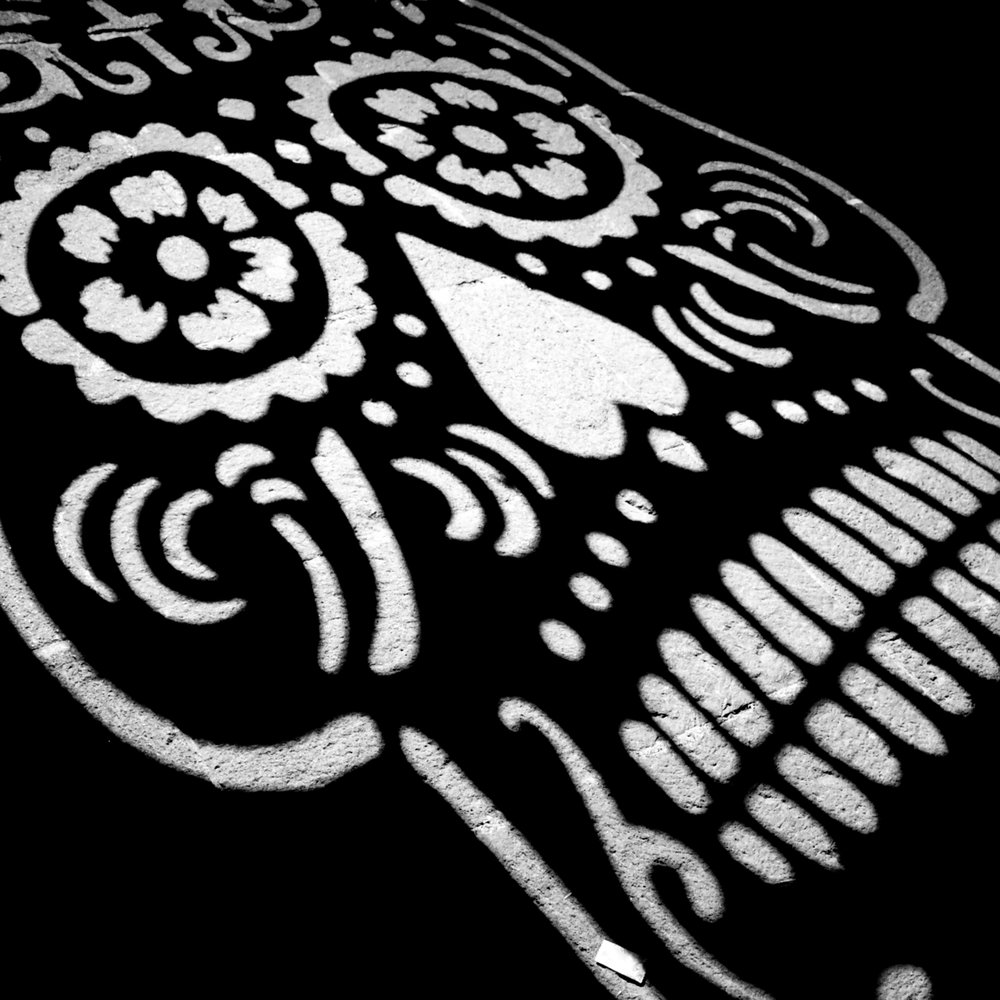
.jpg)
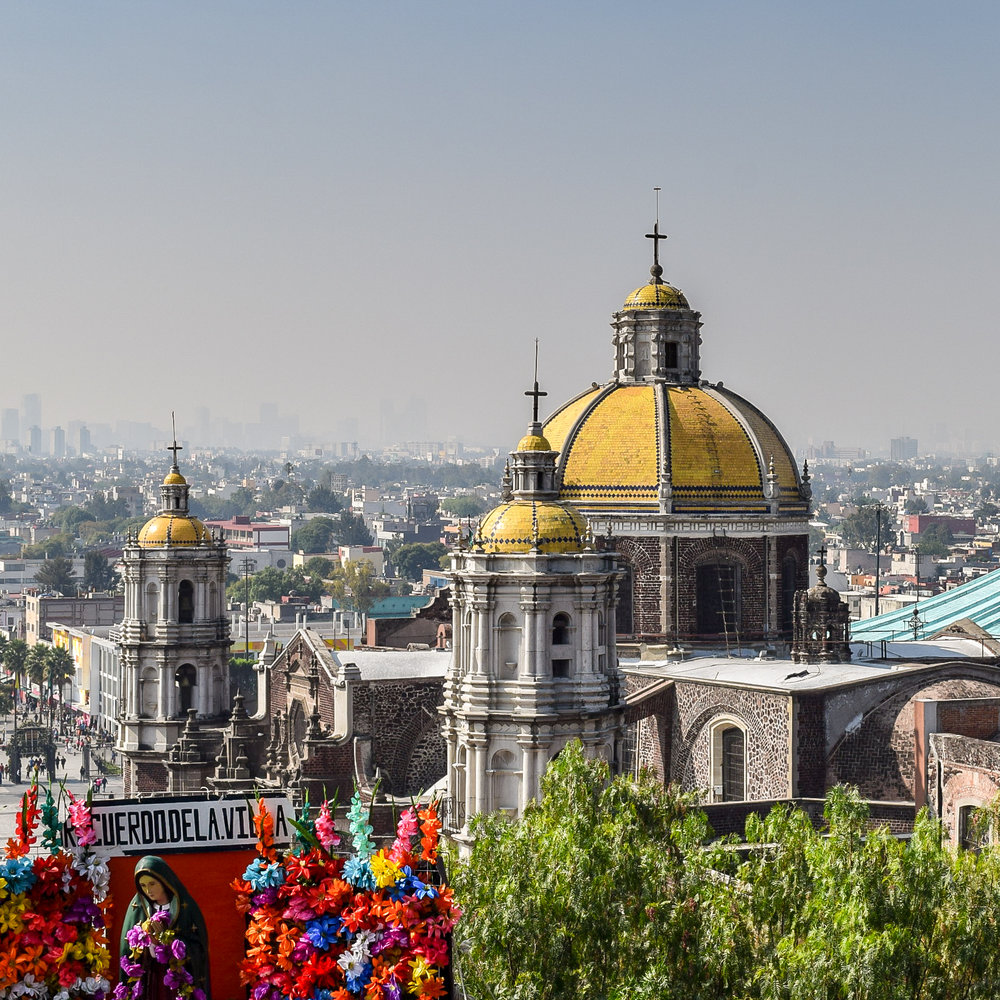
.jpg)
.jpg)

.jpg)

-2.jpg)


